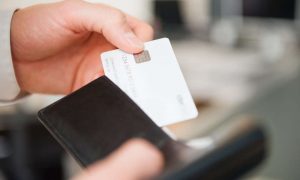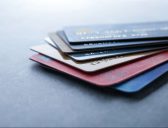When we talk about the prevention of spreading germs, there are a few things that immediately come to mind — washing your hands, disinfecting high-touch surfaces and wearing facial coverings. But there are a few everyday items that may not be top of mind when we regularly clean, including what’s in our wallets.
When buying groceries, grabbing takeout or making any other purchase, we’re likely to touch our credit cards. Whether you’re tapping to pay, swiping your card or inserting the chip, that means your card is touching surfaces that hundreds of other people’s credit cards have also touched recently.
You may or may not have thought of cleaning your cards, but disinfecting them periodically can avoid the accumulation of germs from forming.
Here’s our useful guide on how to clean your credit cards effectively.
In This Post
How to clean your credit cards
Fortunately, disinfecting your credit cards isn’t a complicated process and you can do so with everyday household items.
The easiest way to clean your cards is by using the same technique you use for your hands: soap and warm water. Like washing your hands, you should lightly rub for at least 20 seconds. You can sing “Happy Birthday” twice through or get more creative — Dolly Parton’s “Jolene” has a chorus that lasts 20 seconds, as does Beyonce’s “Love on Top.” I’m a fan of using the chorus to the song “My Shot” from Hamilton.
You can also use one of the EPA-approved disinfectants against COVID-19, which includes many household wipes and sprays such as Clorox. For the tech lover, you can use a UV sterilizer since UV rays kill viruses and bacteria. Keep in mind that your signature may wash off the card when you use soap or a disinfectant. You can always resign the card if this happens.
Will disinfectants damage my credit card?
Short answer? No.
Credit cards, both plastic and metal, are made to be waterproof. Your card should also be able to withstand products such as bleach, vinegar or alcohol. I don’t recommend soaking your cards in any corrosive liquids, but a quick wipe-down with a Clorox wipe or a 20-second wash with some soap and water won’t render them unusable.
In fact, keeping your cards clean could help them stand the test of time. Dirt and grime can build up on your cards, which can scrape at EMV chips and magnetic strips. It’s not a good idea to scrub your cards with an abrasive of any kind, but a gentle cleaning can help keep dirt from building up while killing germs — two birds, one Clorox wipe.
Tips for using card readers and pin pads
Even if your cards are fully disinfected, you might have to interact with germy apparatuses such as card readers and pin pads that you use to make payments at stores. In the U.S., chip-and-signature is the most common authorization method for payments. This means that even if you have a contactless card, you might need to use a stylus, your finger or a pen to sign your signature. Those surfaces have been touched by anyone who came before you.
The best thing you can do is immediately disinfect your hands after you pay and avoid touching your face (which is a best practice you should be following anyway).
Bottom line
As the pandemic lingers on, there’s been a greater emphasis on cleanliness and disinfecting whenever possible. When it comes to your credit cards, good ole’ soap and water will do the job just fine, or you can use a disinfectant to gently wipe down your cards after you use them.
The post How to clean your credit cards appeared first on The Point Guy
Original source: The Point Guy






